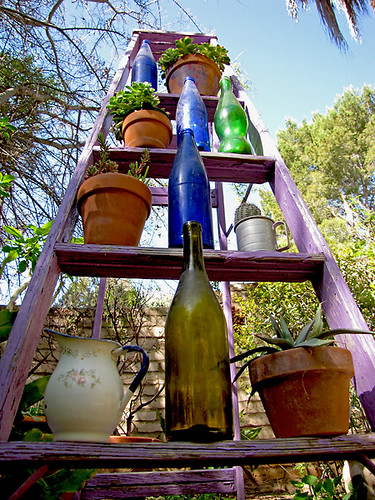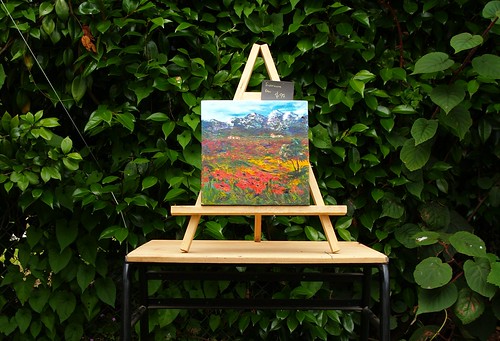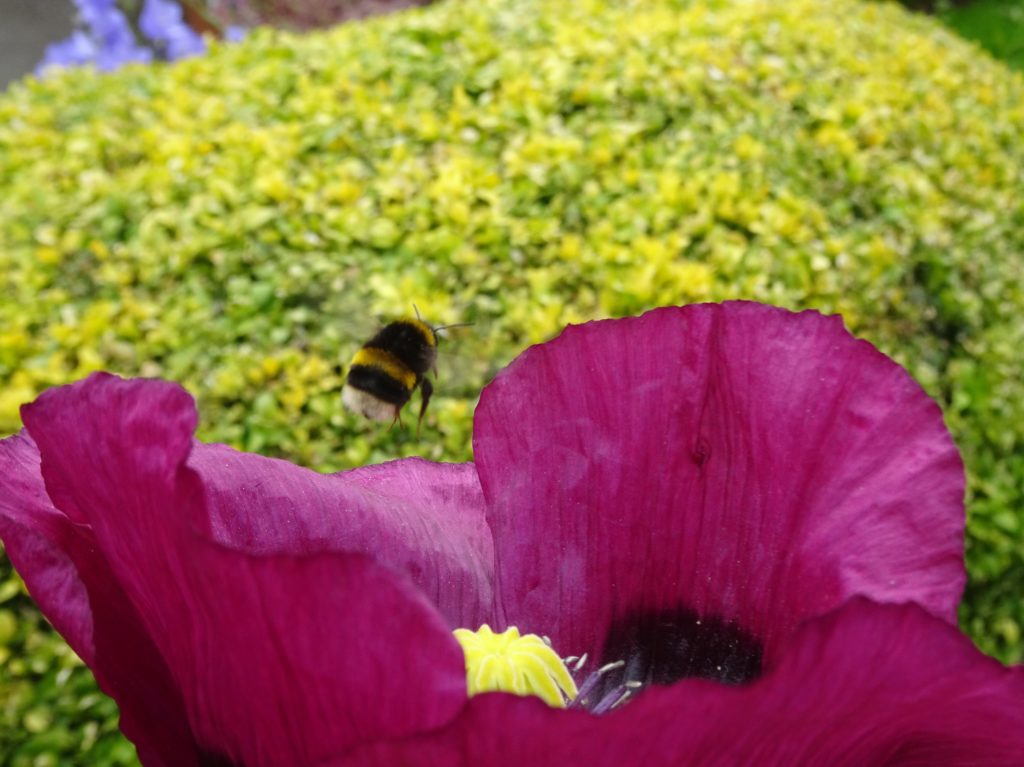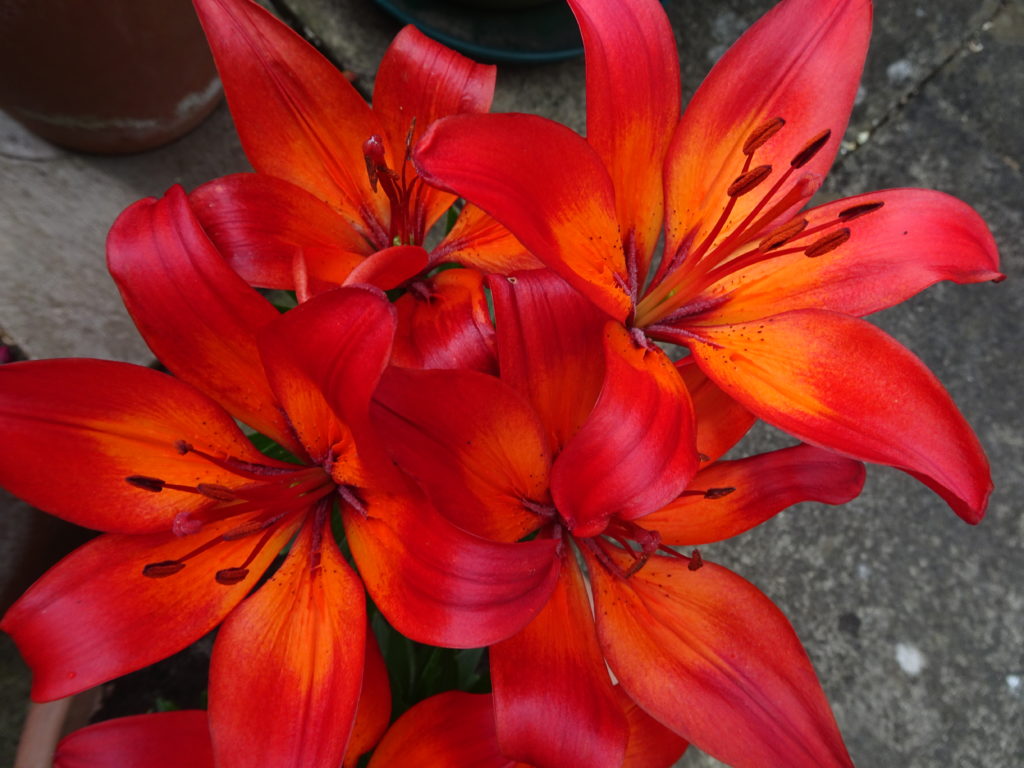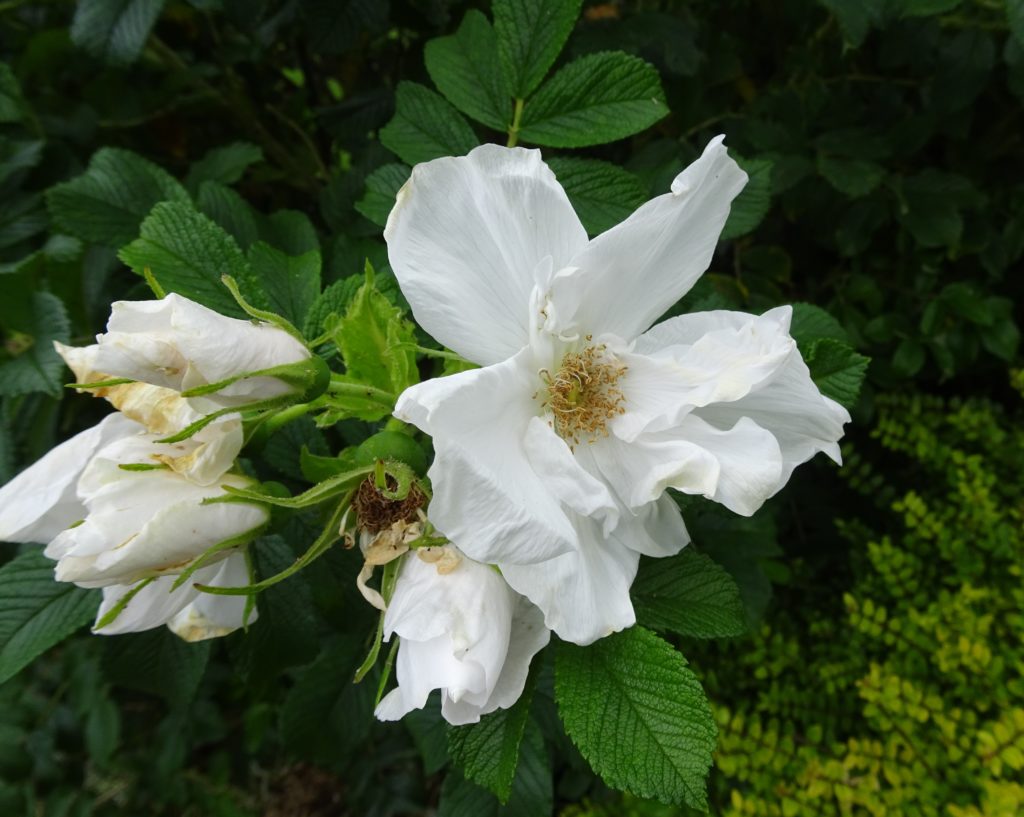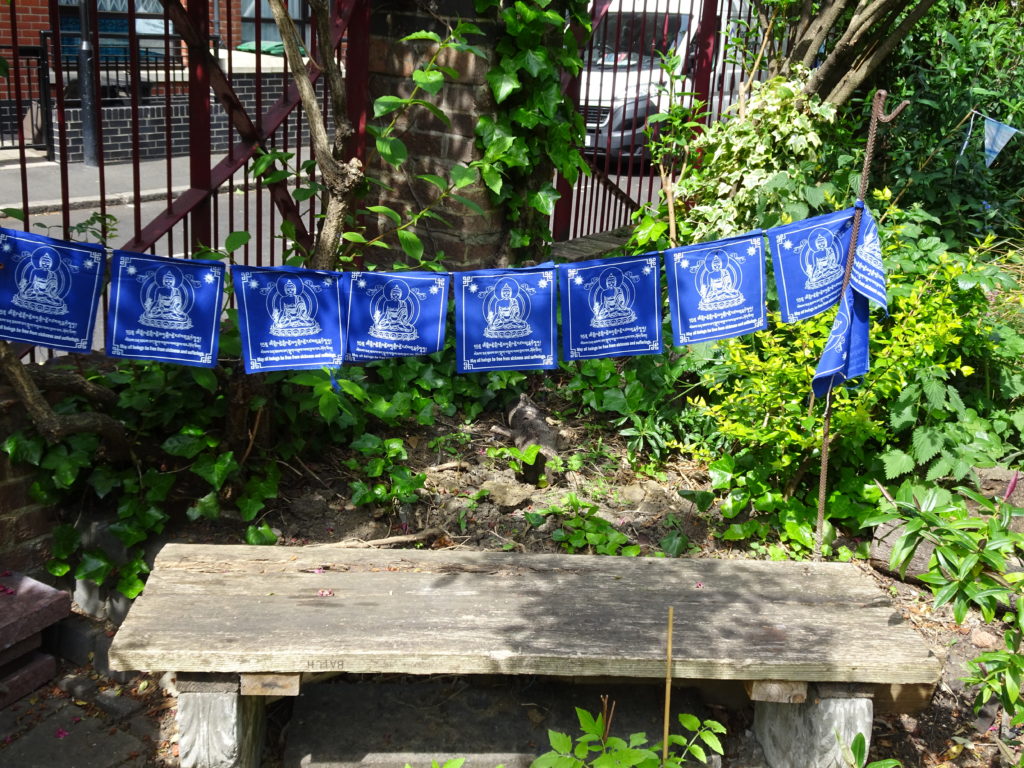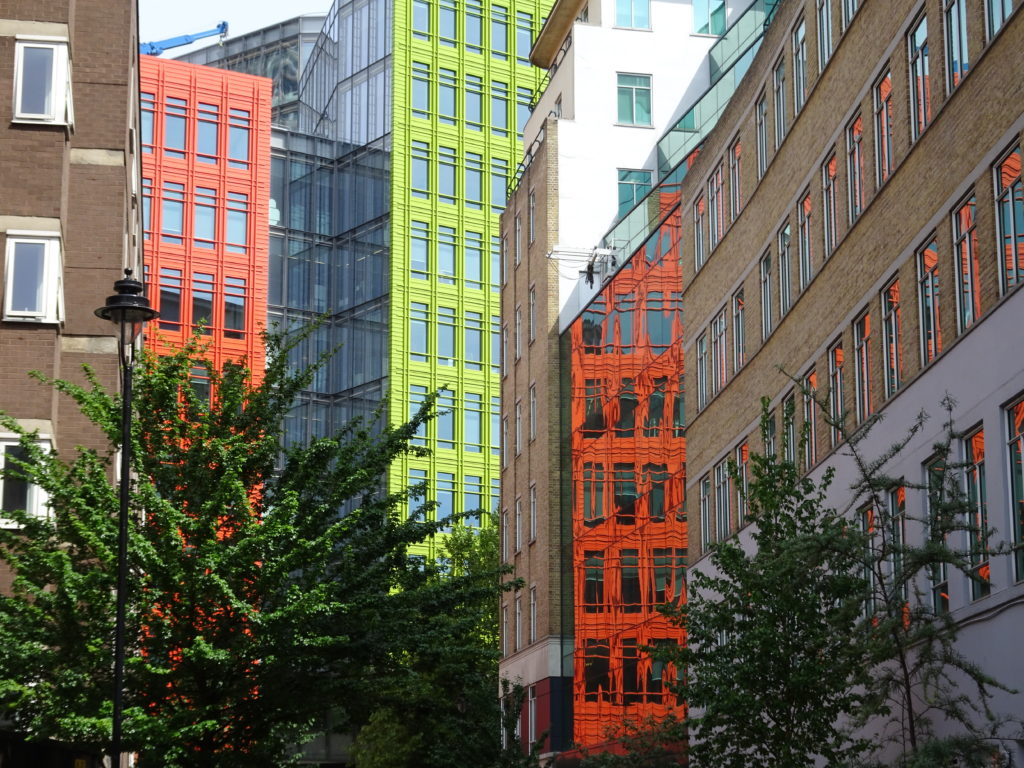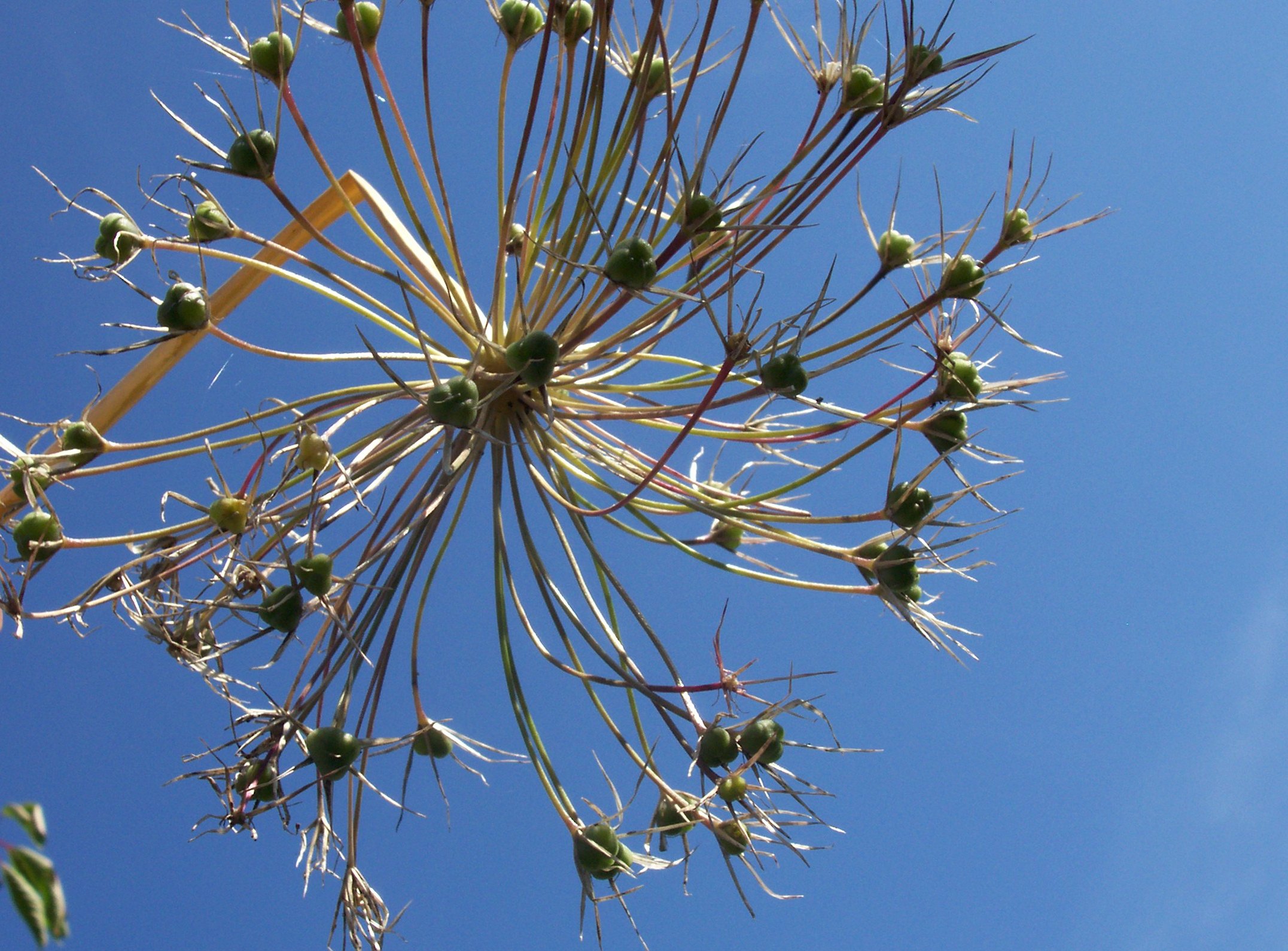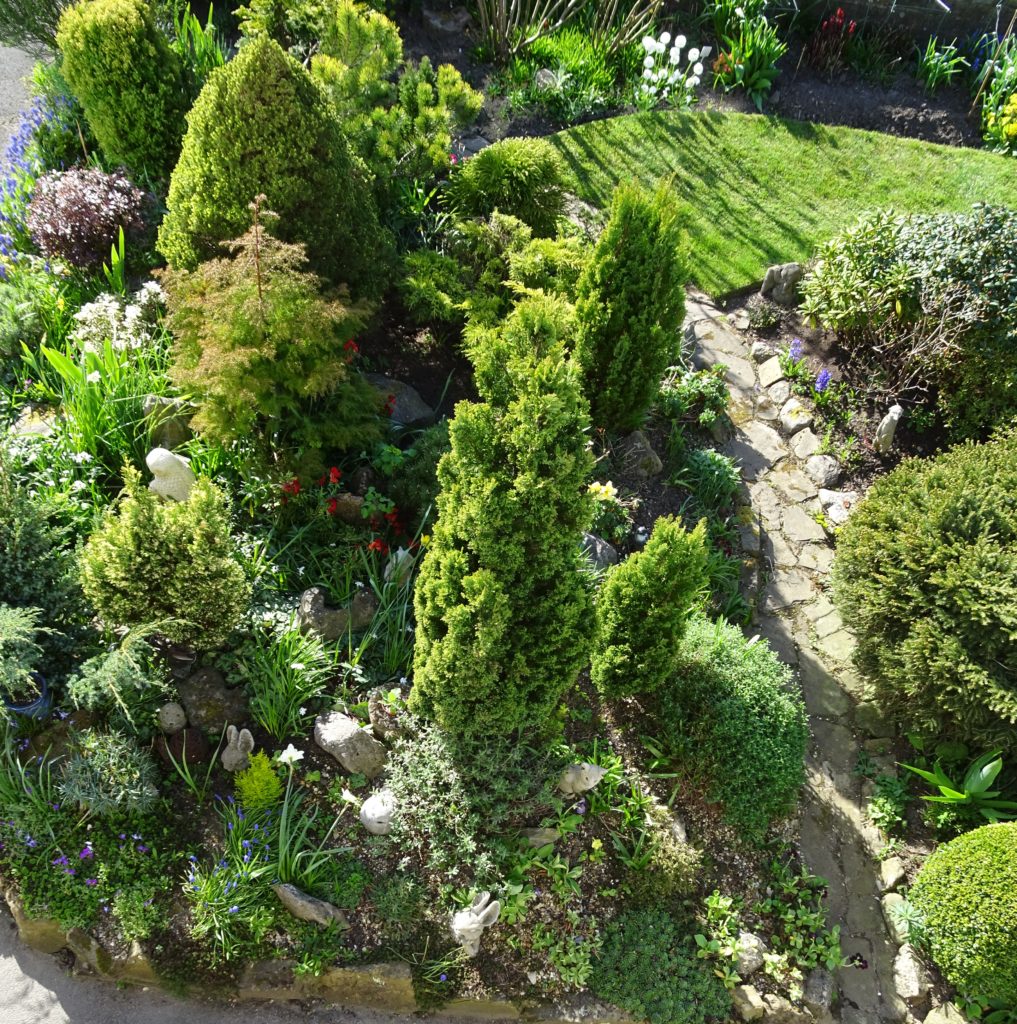Garden and Natural Art
For the winter months I reduce my time in the garden and use art as a replacement hobby. I remember that over 1o years ago our sister site focused on Garden Products. There was a category for Garden Art Products and a selection of updated posts is below. The full range can be accessed on this link
Tucson Botanical Bottle Garden? Not quite, but artistic bottles in the garden.
If you have the bottle to produce your own art then give freedom to your bottled up instincts.
A local garden has used their old empty wine bottles inverted and buried around a sapling to produce a circular no go area. It may not be good in the longer term for the sapling but for the wine drinkers it seems to work.
I am less sure about the bottle tree below but everyone to their own tipple.
The final picture has little to do with bottles but shows art in the garden in the garden so to speak.
Credits
Garden Art by SearchNetMedia, CC BY-NC 2.0
Art in the Garden, Tirau by EssjayNZ CC BY-NC-SA 2.0
Dicentra Art for £10
Posted: April 2nd, 2012 | Author:hortoris | Filed under:Art | No Comments »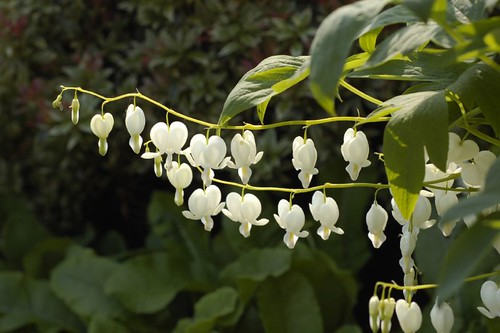
Dicentra are both photogenic and artistic. We often feature them on our Gardeners Tips site as they are rewarding plants to grow.
Plants are widely available for less than £10.
New Dicentra Art for £10
Photographic Prints of Dicentra specabilis Alba from Science Photo Library. Check here for the actual image which differs from the one above which is credited to Facing North East on creative commons BY-NC-SA 2.0
Technical Details of Dicentra Art
A 10×8 Print features an image chosen by Science Photo Library. Estimated image size 254x169mm.
Printed on 254x203mm Fuji Crystal Archive paper for stable image permanence and brilliant colour reproduction with smooth tones, enhanced sharpness, and excellent definition. Size refers to paper used
For any queries contact Science Photo Library c/o Media Storehouse quoting Media Reference 6281632 © Adrian Thomas/science Photo Library
Something a bit different that might appeal during the long winter nights when gardening gets tough.‘Stitch and Sow’ are a range of Embroidery kits with a packet of seeds to grow alongside the Embroidery you are creating. Indian silk fabrics are provided and the A5 sized flower range includes
Cornflower or Lavender, Geranium (Pelargonium), Lupin or Poppy.
Sunflower (Grow your own Van Gogh), Morning Glory, Foxglove, Dahlia and Hearts-ease.
Artistic Garden Hangings
Posted: August 17th, 2010 | Author: hortoris | Filed under: Art, Uncategorized | No Comments »

Trees are a great places to locate art in your garden. RHS Hyde Hall has a series of these woodland nymphs in various strategic locations around the garden. I hang all sorts from branches including old cycling equipment and sundry glass pieces.
An explanation of each wood nymph is provided alongside the sculpture. Both enhance the experience of walking through the woodland glade and do not detract from the natural beauty of the trees.
